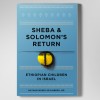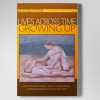Impact of Narcissism: The Errant Therapist on a Chaotic Quest by Peter Giovacchini, NH: Jason Aronson 2000. Reviewed by Nathan Szajnberg, MD
Ved Mehta, the Nobel prize-winning author, gave four principles for good writing: clarity, harmony, truth and an unflinching courtesy to the reader.
Peter Giovacchini follows these principles in his latest book , Impact of Narcissism: the Errant Therapist on A Chaotic Quest (NJ: Jason Aronson, 2000).
This is two books interwoven. First, he writes clearly about clinical work with the narcissistic component of character disorders. Like Freud, he punctuates narrative by clinical material. Second, and a more challenging task, he writes of the jeopardy to our discipline when we become narcissistically invested in our theories over our patients’ needs.
Kuhn emphasized the essential tension between daily normative science and periodic paradigmatic discoveries (Archimedes’ “Eureka!”). Giovacchini encourages us to use our theoretical ears to listen to patients, yet use our scientific curiosity and thinking to challenge our theories, when patients challenge us. Dora did this to Freud; we should follow suit.
This book also gives a remarkably crisp summary of major psychoanalytic theories; a cry for not inventing neologisms (“old wine in murky bottles”) when previous terms, such as the transference/countertransference axis, serves well; explorations of how countertransferences can be along a benign/malignant axis; relating the countertransference to the ego-ideal,the superego; and explores the continuum of narcissism from psychopathology to how it contributes to self-esteem and creativity.
Let us return to perhaps the more unsettling theme of Giovacchini’s book: how narcissism in our profession has jeopardized our credibility, or at least, through hero-worship, hindered our science and technique’s development.
Frattaroli wrote how Freud was both heterodox and orthodox with his own ideas (Frattaroli, 1995, 2001). Internecine warfare began when his acolytes could become either “orthodox” (Jones, Strachey, Anna Freud) or “heterodox” (Jung, Adler, perhaps even the beloved Ferenczi). But, Giovacchini, in a chapter entitled “Old wine in murky bottles,” argues that, at times, our colleagues invent new terms that do not represent new ideas. Intersubjectivity, borrowing Hegel, leads us to a subjective interpretation of reality, a relativism, that approaches nihilism. Giovacchini struggles to address the recent revelation that Heinz Kohut’s major work, “The Two Psychoanalyses of Mr. Z,” was clinically falsified, then Giovacchini takes on the cult-like stance surrounding and protecting Heinz Kohut. He does so, while avoiding ad hominem attack. Giovacchini critiques the substance of Kohut’s theory; but he also cautions that if we as a discipline do not openly discuss falsified data, we lose our credibility. This is troubling: how do we justify apparently new theories (such as self psychology) when we learn that the clinical data upon which it is based, is manufactured, false. If Kohut fabricates a second analysis for Mr. Z. (himself), then do we need to question his theories? In other fields, such as physical anthropology, when Piltdown man was revealed to be a hoax, the scientists within the discipline both revealed the hoax and rejected theories underlying it. Yet, when Newton in his notebooks on the Optiks, would scratch-out experiments because they did not agree with his theories, we see his genius justified his “liberty” with the data. Yet, our responsibility as a discipline is to at least discuss such fabrications openly.
The core of Giovacchini’s ideas are pristine, simple: maintain an intrapsychic focus; adhere to the goals of psychoanalysis –— to help the patient acquire structure, enhance autonomy and master impulses.
He outlines the differences between Oedipal and Narcissus myths (and the psychopathologies they define. Oedipus’ tragic life was initiated by his father’s fear; it was set into motion by Oedipus’ lack of self-knowledge (Had he thought about himself after the seer’s prophecy, he could have known that he would not be the kind of man who would kill his father, mount his mother); and an awareness of others’ needs (his concern about the populace plagued by the Sphinx) matched by his unawareness of himself. Narcissus, beloved of himself, stares at his image in the stream, until the gods condemn him to be rooted by the stream, head bowed, always to gaze at himself. He is frozen and unaware of others (except to the extent that they reflect him).
Don Quixote parodies narcissism. He is grandiose; he disturbs the world; he sees Dulcinea, a whore, in his idealized image. While the popular Broadway version romanticizes him in an appealing light, albeit suspended between pathos and bathos, he perturbs others.
Giovacchini outlines a structural model of the self as a continuum; from appearance, through religion, to increasingly internal structures, including self-esteem. He presents the false self as a ubiquitous; to the extent that we sacrifice our true beliefs for the sake of the external world, we all have some degree of false self.
He offers two levels of nurturing: the foreground of nurturing; the background of soothing. And, much of clinical work with those who suffer from narcissistic ailments, benefit from soothing. The analytic setting is a frame that has therapeutic benefits.
Giovacchini notes that the personal and the professional have become blended, particularly among schools such as the intersubjectivists. But cultural mores also have shifted, shifting clinical practice. For instance, in his parody of Kohut, “Two analyses of Ms. A.,” he points out how the sexual conservatism of the 1950’s resulted in his supervisor urging him to place restrictions on his patient; rethinking this case fifty years later results in a different formulation and different technique.
But, the softened boundaries between personal and professional puts greater demands on self-knowledge. When our work area, also our playground, is the intrapsychic, the inner lives of the analyst and the analysand, then analysts have the greater responsibility of self-knowledge — of reading our thoughts, feelings, desires, fears, wishes and hopes — so that these do not substantively interfere with the analysand’s need to create, project, replicate feelings within the psychoanalyst in order to make use of analyses.
Different writers offer different contributions. Milton gave us passion; Baedecker, economy; Bellow, the adherence of high and low culture. Peter Giovacchini with economy of language, with passion for psychoanalysis, compassion for his analysands, and with “unflinching courtesy for the reader,” teaches us how to heal.
References
Frattaroli, E. (1995). Heterodox and orthodox Freud, In Educating the Emotions; Bruno Bettelheim and Psychoanalytic Development. Ed. N. Szajnberg, NY: Plenum.
Frattaroli, E. (2001). Healing the Soul In the Age of the Brain, NY: Viking.
Kohut, H. (1979) The Two Analyses of Mr. Z., IJP: 60,p. 3-27.
Kuhn, T. (1977)The Essential Tension.Chicago, UC Press.
Mehta, V. (2001). The Academic Scholar.



